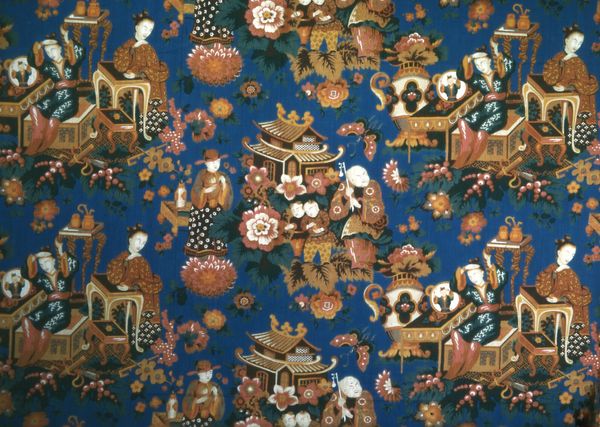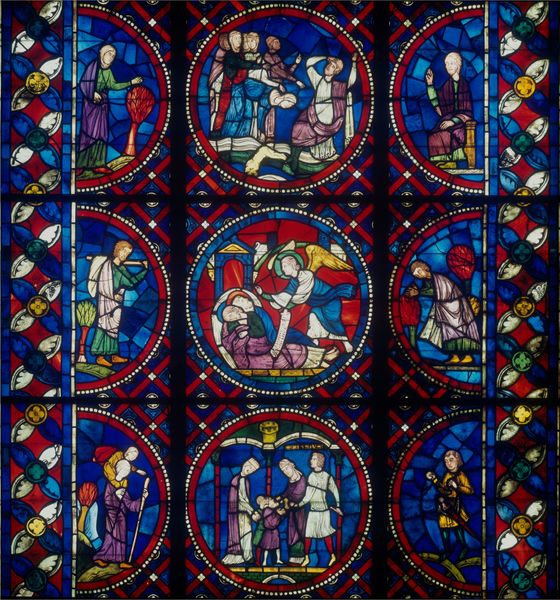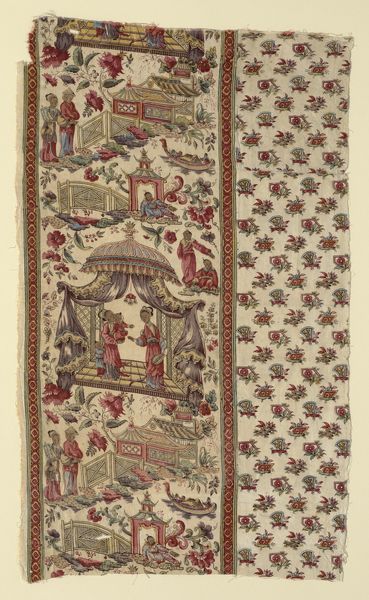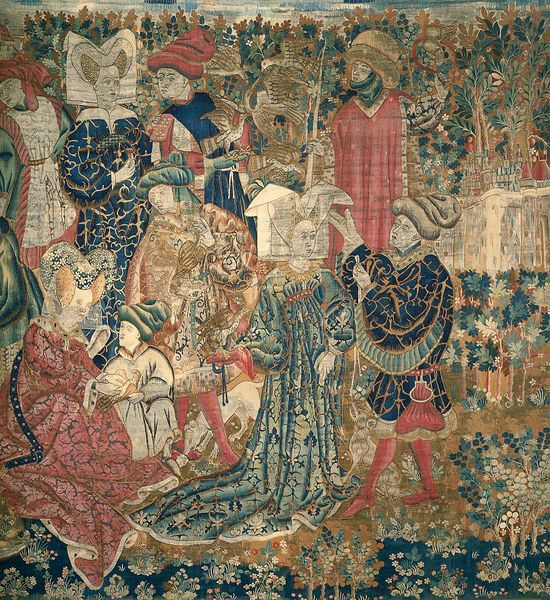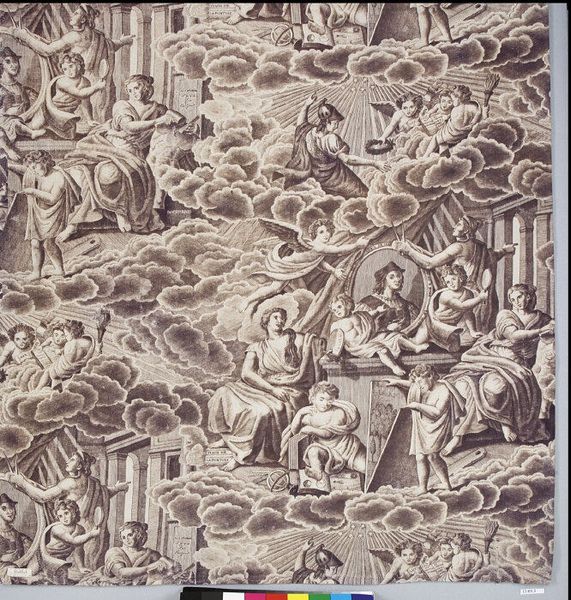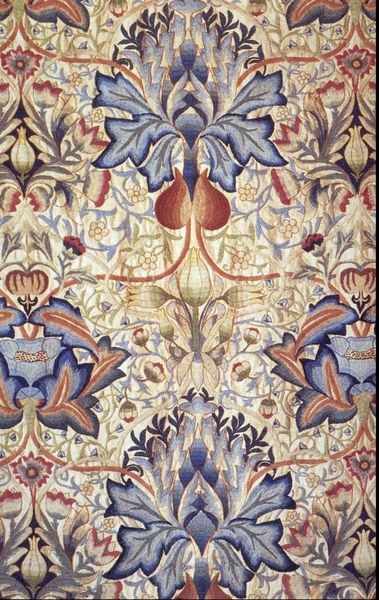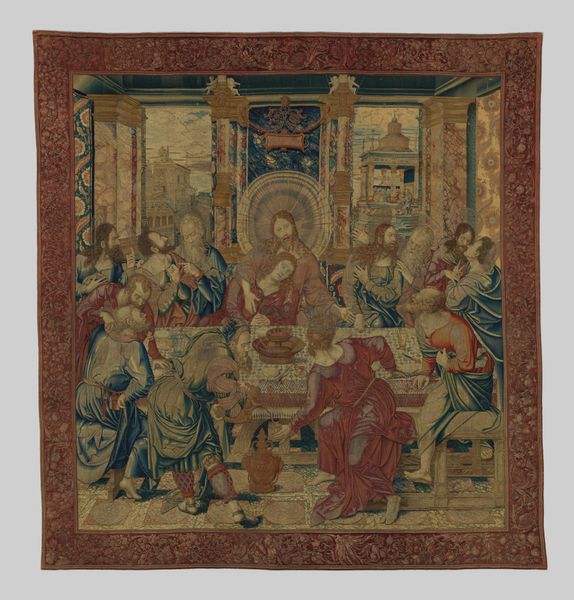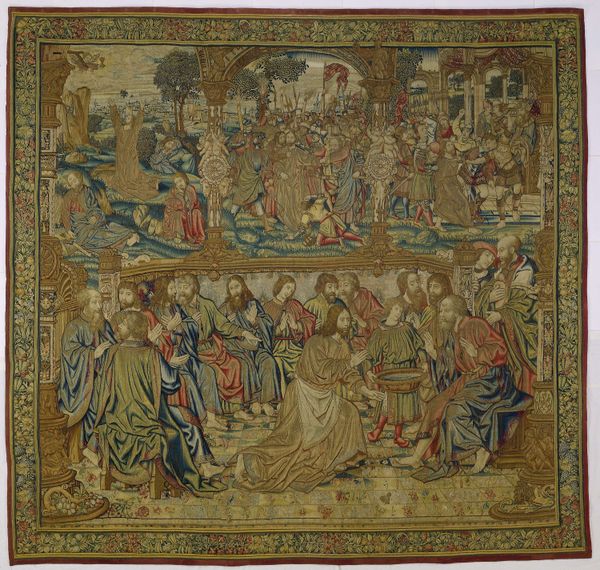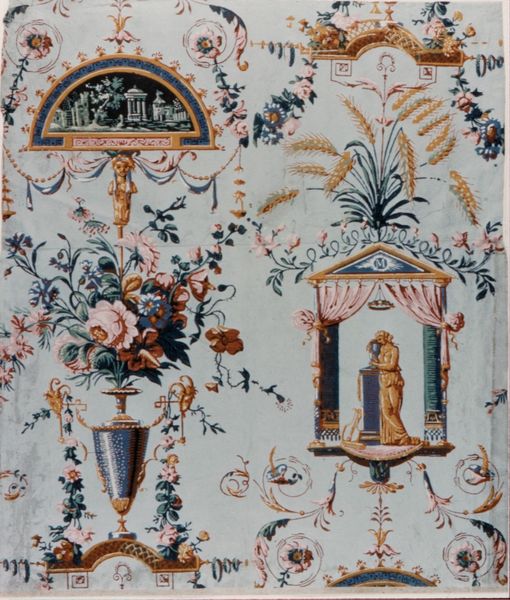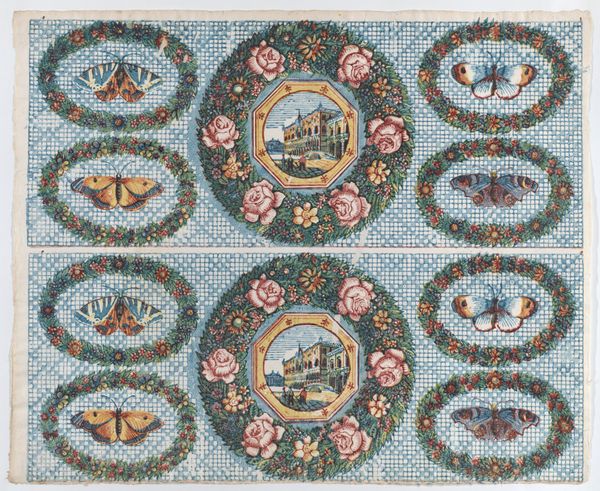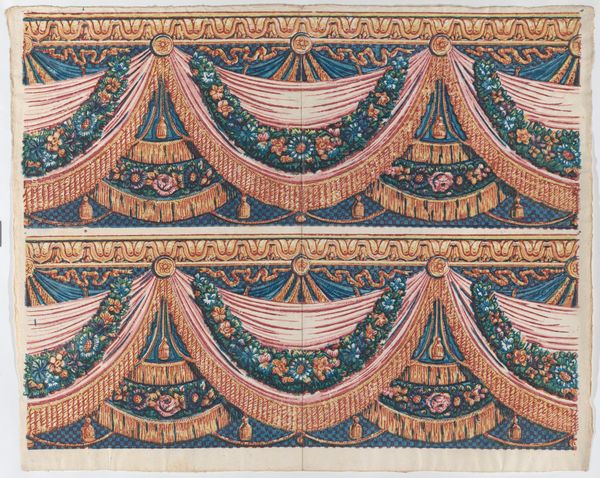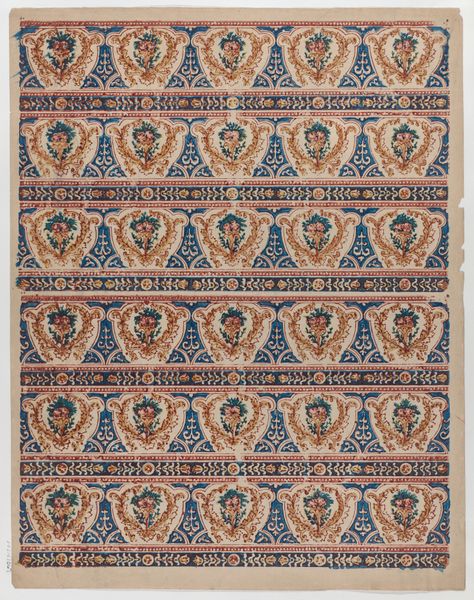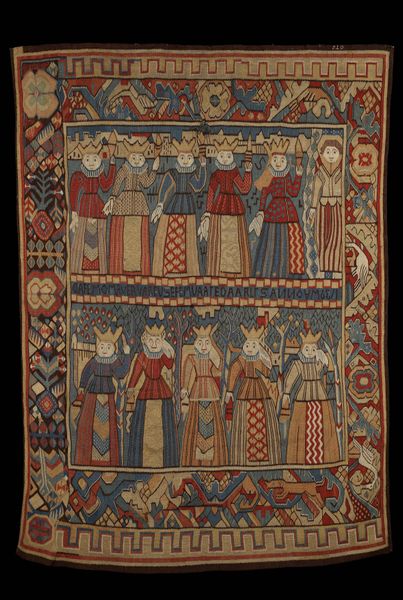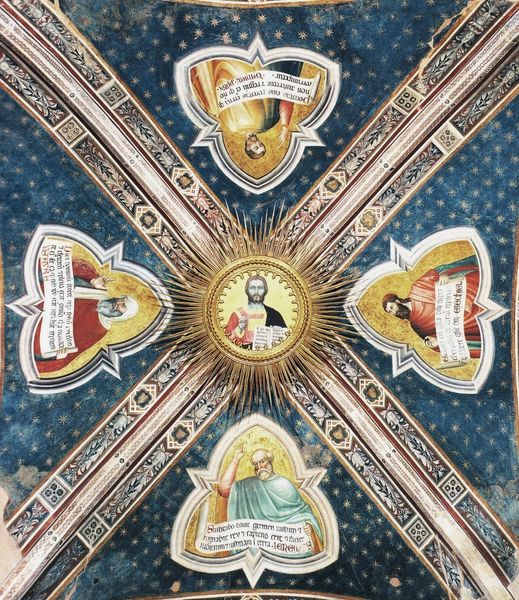
print, weaving, textile
# print
#
pattern
#
pattern
#
weaving
#
textile
#
geometric pattern
#
geometric
#
history-painting
Dimensions: a: 218.7 × 64 cm (86 1/8 × 25 1/8 in.) b: 218.7 × 67.6 cm (86 1/8 × 26 5/8 in.) c: 219.3 × 32.1 cm (86 1/4 × 12 5/8 in.) Repeat: 31.1 × 41.9 cm (12 1/4 × 16 1/2 in.)
Copyright: Public Domain
Editor: This furnishing fabric, "Le Mariage," dates to around 1810, and is credited to Jean-Baptiste Mallet. It looks like a print on textile, a repeating pattern with these classical figures and architectural motifs. The red background is quite striking. What stands out to you about this piece? Curator: The material reality of this fabric, its creation, and its use in furnishing speak volumes. It’s easy to focus on the "history painting" aspect, but consider the social implications. Who could afford such a fabric? What was the labor like that produced it? Was it locally produced or imported? Editor: That’s a really good point. I was focusing on the scenes depicted, assuming they related to high art. I didn't even think about how the fabric itself might reflect the social hierarchy. So the images are secondary to the material itself? Curator: Not secondary, but consider how the image *functions* when mediated through the material. History painting reproduced for domestic consumption shifts its meaning entirely. It moves out of the museum or gallery and into the home, suggesting a democratization of art…or perhaps, a commodification? Notice the precision of the weaving or printing - a high degree of skill, regardless. Editor: I guess I hadn’t really thought about it as a commodity before. I suppose this challenges the idea that "art" exists separately from everyday life, right? That something functional can be high art too. Curator: Exactly. Think about the division of labor inherent in producing textiles versus paintings. One is often communal and the other individualistic. We must ask ourselves: who decides what’s “art” and what’s merely craft? It shows the art's function. Editor: This completely changed my perspective! I will definitely remember to think more about the production and purpose of art in relation to society and economy. Thanks for showing me that today. Curator: It’s crucial to understand art's production to see the larger cultural context at work, yes, exactly.
Comments
No comments
Be the first to comment and join the conversation on the ultimate creative platform.
